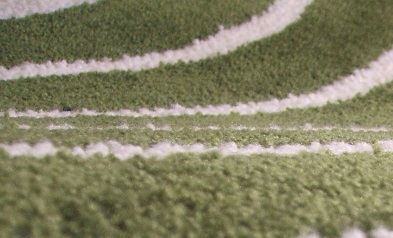Typically all manufactured materials and products emit gasses from VOC?s (Volatile Organic Compounds) for a period of time. These may have a distinct odour and are, therefore, perceived as dangerous. There are a great number of VOC?s and different materials emit different mixes and concentrations of VOC. The distinctive smell of the interior of a new car, for example, is the result of VOC emissions, and is perceived as desirable to many people. All too soon the distinctive smell diminishes and disappears as the VOC?s are released into the atmosphere.
 The new carpet smell is the result of VOC emissions, usually from the backcoating material and it too will diminish and disappear in time dependent upon the level of ventilation in the room.
The new carpet smell is the result of VOC emissions, usually from the backcoating material and it too will diminish and disappear in time dependent upon the level of ventilation in the room.
According to studies by leading research organisations in the US and Germany, the contribution made by carpet to indoor air pollution is minimal compared with many other indoor finishes and materials. Taking paint as being rated as 100, relative emissions are adhesives 72.5, wall coverings 8.5, plywood 1 and carpet 0.5. (i.e. a carpet emits 1/200th of the VOC gasses given off by paint). Such a low level of emissions from carpet does not constitute a health risk for consumers.
Some adhesives used for the installation of some carpets may contribute to VOC levels and should be used in well ventilated areas which should continue to be ventilated for some days after installation has been completed. Modern adhesives, which have been recently introduced, have significantly lower emission levels.
 Indoor Air Quality
Indoor Air Quality Many people are concerned about indoor air quality. An analysis of the air in a new office building in the USA where the workers were complaining of discomfort and illness found that the enclosed heated and air conditioned environment recirculated rather than dispersed emissions from the indoor wall, ceiling, floor, and furnishings. Ventilation, introducing fresh air removed any problems.
Many key research papers show that carpet, in fact, contributes significantly to cleaner indoor air. Three major pollutants of indoor air quality are formaldehyde which is emitted from a wide range of building products, oxides of nitrogen and oxides of sulphur both of which are by-products of combustion processes (e.g., gas cookers and heaters).
Research has shown that wool is particularly effective absorbent of these gases. A study in the US has shown that wool has one of the highest rates of removal of nitrogen dioxide from the atmosphere. Because of the 3 dimensional nature of carpet with the wool fibres in the pile standing vertically from the backing, the wool fibres present a considerable fibre area for the absorption of gases. One square metre of carpet containing 1Kg of wool will present a fibre surface for gaseous absorption of 100 square metres.
Other studies have shown that large amounts of sulphur dioxide are also absorbed and held by wool fibres in carpet.
Carpet, therefore, contributes significantly fewer emissions than do other building materials, indoor furnishings and finishes. The capacity for carpet to absorb airborne pollutants and to hold these makes it a significant contributor to good indoor air quality.
Carpet Care & Upholstery Maintenance Tips
Carpet Care
Why Choose Professional Capret Cleaning
The Dust Mite & Their Habitat
Reductionof Dust Mite Population
Top 10 Tips When Buying Carpet
Chemicalsinthe Carpets
Rug Care
Cleaning Natural Fiber Carpets - sisal, coir, seag
Water Removal & Water Damage Repairs
Emergency Carpet & Upholstery Service
Check Our Prices & Special Offers